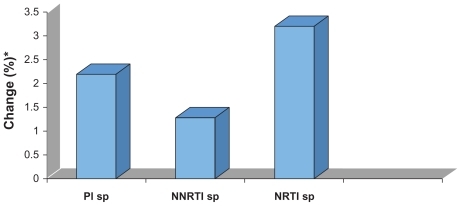Figures & data
Table 1 Types of lipodystrophy
Figure 1 Computerized tomography scans of (A) a healthy adult and (B) a patient with coexisting lipoatrophy and lipohypertrophy. In comparison with the healthy adult, the patient with coexisting lipoatrophy and lipohypertrophy has less subcutaneous adipose tissue and an increase in intra-abdominal (visceral) adipose tissue.

Table 2 HIV-associated lipodystrophy: epidemiological associations
Figure 2 Change in endothelial function in the AIDS Clinical Trials Group study 5142.Citation32 This study examined a class-sparing strategy and a substudy examined endothelial function as flow-mediated dilatation (FMD). FMD was impaired at baseline and improved during highly active antiretroviral therapy. The improvement was independent of a specific regimen and bore no relationship to baseline viral load; however, it had a significant association with the decrease in viral load.
*Data expressed as percent and presented as absolute change compared with pretreatment values.
Abbreviations: NNRTI, non-nucleoside reverse transcriptase inhibitor; NRTI, nucleoside reverse transcriptase inhibitor; PI, protease inhibitor; sp, sparing.
